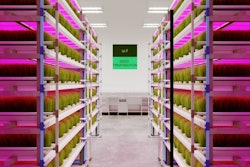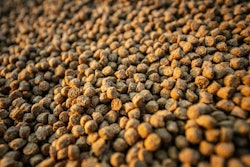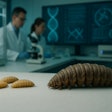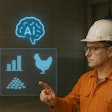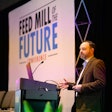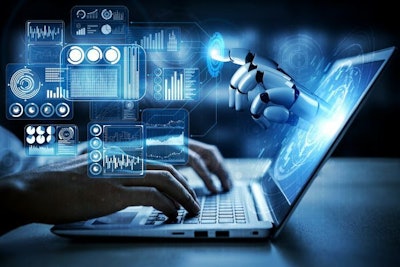
AI will enable precision agriculture, enhance on-farm operations
Agriculture has long struggled to find talent, and it’s not just a lack of people entering the field; there’s also a loss of skill — a connection to the land and the animals — that seems to be dwindling.
“I remember a 90-year-old farmer and he was so good, that by just walking in the bin he was able to pinpoint that we need to fumigate these grains because fungus is going to come, and he was right,” recalls Suresh Neethirajan, an associate professor at Wageningen University Research Institute. But the farmer’s granddaughter, Neethirajan says, wasn’t able to accomplish the same feat.
This might sound like a call back to the old ways, but Neethirajan takes a different perspective. In the future, he says, artificial intelligence will have the capacity to perform the same task as the 90-year-old farmer. And it will be able to do so more reliably, at a lower cost, and under a greater variety of conditions than any single human could achieve.
That’s still a bit of a way off. But artificial intelligence has already made its way into some farms, where it’s being used to detect the health condition of animals with ever-growing precision. And in the future it could fill a variety of roles — from predicting the quality and nutritional content of feed ingredients, to formulating the feeds themselves.
Future farmer robots
It’s still somewhat difficult to predict exactly how artificial intelligence will impact the animal feed industry. That’s partially because the technology is still relatively new, and also because the potential applications are so broad.
Speaking generally, artificial intelligence excels at taking vast quantities of data — datasets far to large for a human to analyze — from a variety of formats and comparing them to detect patterns. What kind of patterns?
“If a person can recognize it, AI should be able to see it and recognize it,” says Maria Greicer, vice president of partnerships at Keymakr, a computer science firm that builds datasets to “train” artificial intelligence to recognize things such as when an animal might be sick.
But unlike a person, who can’t be present at a barn 24/7 and can’t monitor every single individual in a herd of hundreds of animals, artificial intelligence can, Greicer says. So artificial intelligence is like having that 90-year-old expert farmer on staff — except he’s omniscient and never takes time off.
This could prove useful in any number of scenarios, Neethirajan says. But in his own work evaluating the use of artificial intelligence, he’s identified three broad ways in which the technology could have the greater potential impact on the production of animal feed.
3 ways AI could be used in animal feed production
The first potential application, he says, is the detection of potential contaminants in feed and feed ingredients. While producers already sample feed extensively for pathogens, mycotoxins and the like, it can be difficult when you’re looking at a massive cargo of grain to know exactly where to take that sample from, Neethirajan says.
Artificial intelligence could end the search by using a variety of inputs to identify anomalies worth testing.
This sort of AI would utilize “multi-modal” data, Neethirajan continues. This means the program could collect visual input to evaluate shapes and colors, temperature, infrared data, even biochemical components. It could use doppler radar to send sound waves through the feed and analyze the echoes that come back.
“What we are talking about here is finding the needle in the haystack,” Neethirajan says. “There could be several hundred tons present in a bin, but artificial contamination could still point out exactly where the source of contamination is present. That’s the beauty of artificial intelligence.”
Similarly, AI could be used to watch vast herds of animals for changes in behavior — not just how much they eat but how much they walk around, sleep, or interact with other animals. This application could detect signs of stress or illness in animals, or potentially calculate an exact caloric need, Neethirajan says.
But perhaps the greatest strength artificial intelligence has to offer, Neethirajan says, is its potential predictive capabilities.
Artificial intelligence can be used to create a kind of program called a “digital twin” or sometimes a “digital avatar” which takes all the known information about an animal, feed mill or feeding system and creates an exact digital replica. These digital models can then be used to test a variety of scenarios at a very low cost — or even in advance of expected conditions.
For example, it could allow feed producers to determine the potential nutritional content of ingredients shipped in a heat wave forecast to take place in two weeks. Or it could be used to build models of contamination in feed to test the conditions in which a particular mold or bacteria would thrive, and how those conditions could be changed or modified.
This kind of predictive technology is still five or more years out, but it is in development, Neethirajan says. And, meanwhile, simpler applications of artificial intelligence have already made their way into animal agriculture.
On-farm insights
Even basic AI remains a relatively new technology, so it’s still far from typical at your average farm. But it does exist.
“There are farms out there that are automated systems,” Greicer says. “Different systems are implemented depending on the farm, but it’s fully automated, especially the feeding.”
While Greicer isn’t at liberty to disclose particular clients or partners, she says artificial intelligence is in use to provide 24/7 monitoring of animals on several farms — mostly pig farms and a couple of dairy operations. The systems in question are fully visual, so while they can’t necessarily determine the weight of the animals, they can evaluate body condition, and they’re increasingly good at identifying and tracking individual animals.
But it isn’t necessarily feeding behavior that has emerged as the most interesting data collected by the artificial farm monitors. Rather, Greicer says the AI’s ability to monitor animal behavior has proven unexpectedly insightful.
“Monitoring how the animal is moving, behaving, how many steps they are taking, if they are fighting or not,” Greicer lists. “Based on that, you can determine … the overall condition and health of the animal.”
When the AI detects an anomaly in an animal’s behavior, it triggers an alert to summon a human caretaker to evaluate the animal and potentially administer treatment, Greicer says. Given that the AI never eats, sleeps or takes a day off, this could prove invaluable to reducing farm labor needs, and to improving the early detection of outbreaks of disease and other health concerns.
Systems capable of monitoring animal health are available on commercial markets, Greicer says, but for the time being the upfront costs remain a barrier for all but the largest animal producers.
“But it’s a new thing,” she says. “I’m 100% sure it will be implemented in more and more facilities, because it’s so much cheaper and efficient, in the next couple of years.”
Announcing the Feed Mill of the Future digital supplement
WATT’s feed brands Feed Strategy and Feed & Grain magazines join forces to launch the monthly Feed Mill of the Future digital supplement. Each edition aims to provide animal feed industry stakeholders with forward-looking content, market insights and a spotlight on the leading-edge technologies shaping the global feed industry of tomorrow.
Subscribe today! https://bit.ly/3dWzow7


